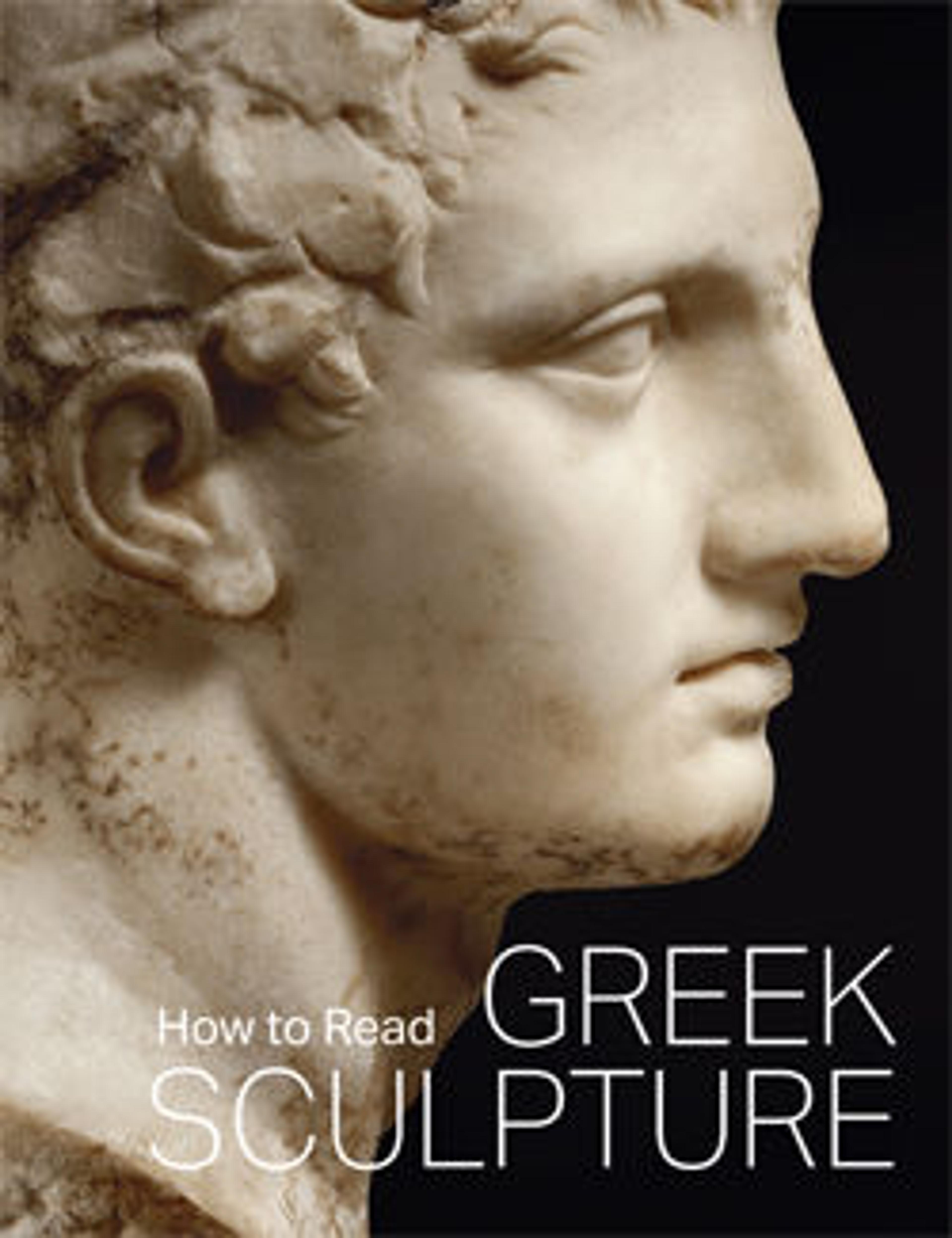Marble stele (grave marker) with a youth and little girl, and a capital and finial in the form of a sphinx
Inscribed on the base: to dear Me[gakles], on his death, his father with his dear mother set [me] up as a monument
This is the most complete grave monument of its type to have survived from the Archaic period. Fragments were acquired by The Metropolitan Museum of Art in 1911, 1921, 1936, 1938, and 1951. The fragment with the girl's head, here a plaster copy, was acquired in 1903 by the Berlin Museums; the fragment with the youth's right forearm, also a plaster cast here, is in the National Museum in Athens. The capital and crowning sphinx are casts of the originals, displayed in a case nearby.
The youth on the shaft is shown as an athlete, with an aryballos (oil flask) suspended from his wrist. Athletics were an important part of every boy's education, and oil was used as a cleanser after exercise. He holds a pomegranate—a fruit associated with both fecundity and death in Greek myths—perhaps indicating that he had reached puberty before his death. The little girl, presumably a younger sister, holds a flower.
This exceptionally lavish monument, which stands over thirteen feet high, must have been erected by one of the wealthiest aristocratic families. Some scholars have restored the name of the youth in the inscription as Megakles, a name associated with the powerful clan of the Alkmeonidai, who opposed the tyrant Peisistratos during most of the second half of the sixth century B.C. The tombs of aristocratic families were sometimes desecrated and destroyed as a result of that conflict, and this stele may well have been among them.
This is the most complete grave monument of its type to have survived from the Archaic period. Fragments were acquired by The Metropolitan Museum of Art in 1911, 1921, 1936, 1938, and 1951. The fragment with the girl's head, here a plaster copy, was acquired in 1903 by the Berlin Museums; the fragment with the youth's right forearm, also a plaster cast here, is in the National Museum in Athens. The capital and crowning sphinx are casts of the originals, displayed in a case nearby.
The youth on the shaft is shown as an athlete, with an aryballos (oil flask) suspended from his wrist. Athletics were an important part of every boy's education, and oil was used as a cleanser after exercise. He holds a pomegranate—a fruit associated with both fecundity and death in Greek myths—perhaps indicating that he had reached puberty before his death. The little girl, presumably a younger sister, holds a flower.
This exceptionally lavish monument, which stands over thirteen feet high, must have been erected by one of the wealthiest aristocratic families. Some scholars have restored the name of the youth in the inscription as Megakles, a name associated with the powerful clan of the Alkmeonidai, who opposed the tyrant Peisistratos during most of the second half of the sixth century B.C. The tombs of aristocratic families were sometimes desecrated and destroyed as a result of that conflict, and this stele may well have been among them.
Artwork Details
- Title: Marble stele (grave marker) with a youth and little girl, and a capital and finial in the form of a sphinx
- Period: Archaic
- Date: ca. 530 BCE
- Culture: Greek, Attic
- Medium: Marble
- Dimensions: total H. 13 ft. 10 11/16 in. (423.4 cm)
- Classification: Stone Sculpture
- Credit Line: Frederick C. Hewitt Fund, 1911; Rogers Fund, 1921; Munsey Funds, 1936, 1938; and Anonymous Gift, 1951
- Object Number: 11.185a–d, f, g, x
- Curatorial Department: Greek and Roman Art
More Artwork
Research Resources
The Met provides unparalleled resources for research and welcomes an international community of students and scholars. The Met's Open Access API is where creators and researchers can connect to the The Met collection. Open Access data and public domain images are available for unrestricted commercial and noncommercial use without permission or fee.
To request images under copyright and other restrictions, please use this Image Request form.
Feedback
We continue to research and examine historical and cultural context for objects in The Met collection. If you have comments or questions about this object record, please contact us using the form below. The Museum looks forward to receiving your comments.
